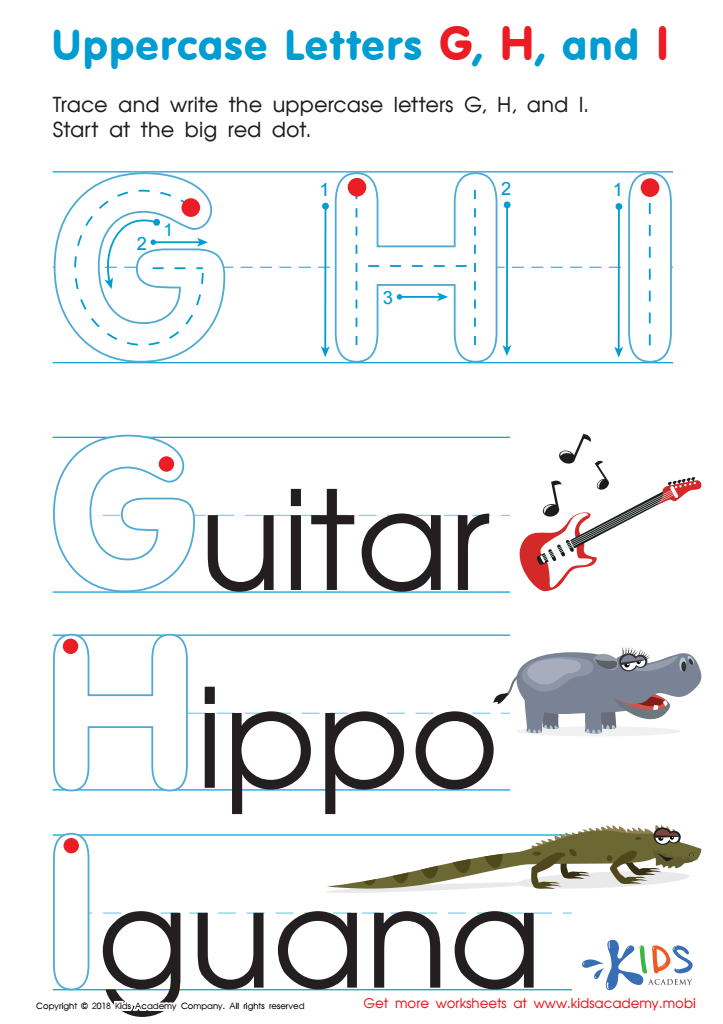Letter formation Normal Tracing Letters Worksheets for Ages 3-7
3 filtered results
-
From - To
Introducing our "Letter Formation Normal Tracing Letters Worksheets for Ages 3-7," a perfect resource to help young learners master the art of writing. These worksheets are designed to make learning fun and engaging, providing age-appropriate tracing activities that develop fine motor skills and foundational writing abilities. Each worksheet allows children to practice each letter multiple times, reinforcing proper letter formation. Ideal for both classroom and home use, our tracing letters worksheets support early literacy and create a positive learning experience. Download now to set your child on the path to reading and writing success!


Letter P Tracing Page


Uppercase Letters G, H, and I Worksheet


Letter G Tracing Page
Letter formation and tracing are fundamental skills for children aged 3-7 as they lay the groundwork for effective handwriting and literacy. First and foremost, proper letter formation aids in the development of fine motor skills. These foundational skills are critical as they allow children to develop control and coordination in their fingers and hands. Consequently, this early practice helps with other tasks such as cutting or buttoning a shirt.
Moreover, learning to trace letters instills the basic principles of reading and writing in young minds. Knowing the correct formation eases the transition from individual letters to coherent words and sentences. Children who struggle with letter formation may face difficulties as they advance academically, potentially slowing down their learning process.
Furthermore, accurate letter tracing fosters a sense of accomplishment and boosts self-confidence. Mastery of these basic skills encourages children to explore more advanced writing and reading exercises, enhancing their overall enthusiasm for learning.
Additionally, high-quality tracing exercises often incorporate patterns and textures, teaching children to recognize and replicate shapes and forms in their environment. Parents and teachers play a crucial role in guiding this learning process, ensuring that children develop a solid foundation for future academic success.
 Assign to My Students
Assign to My Students














